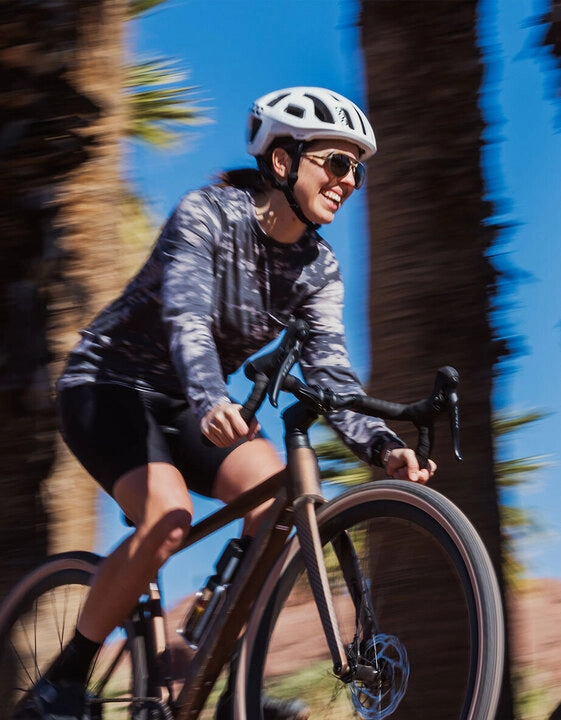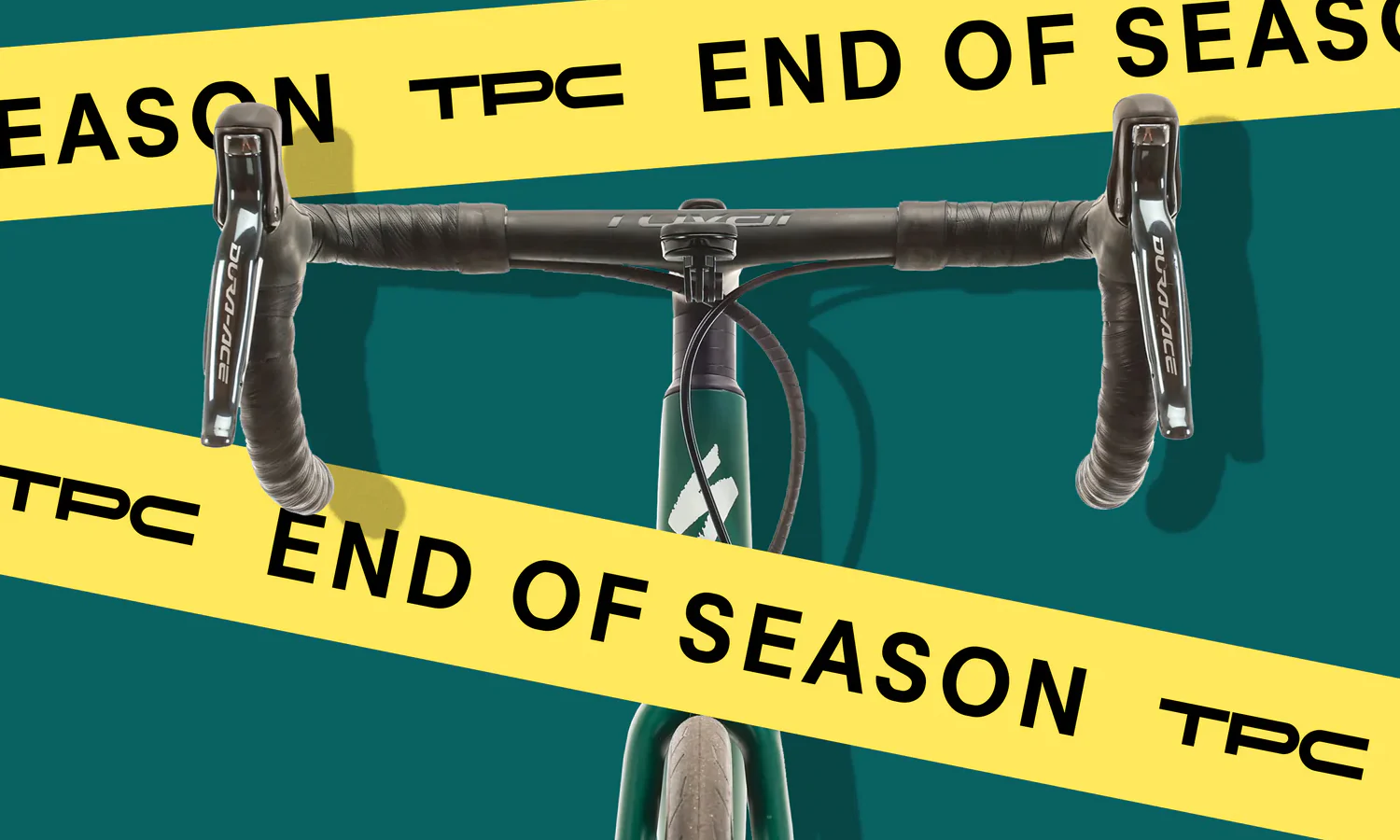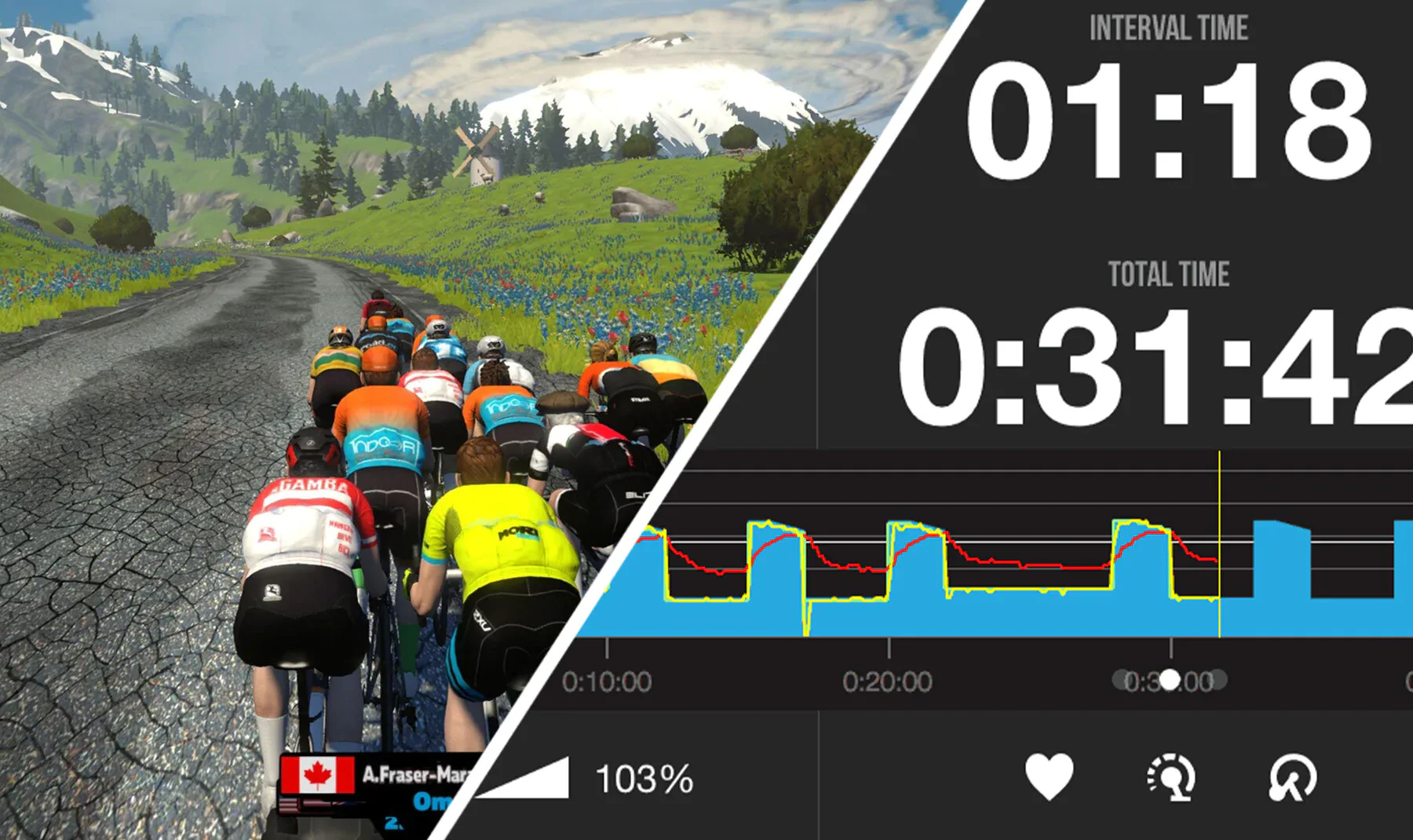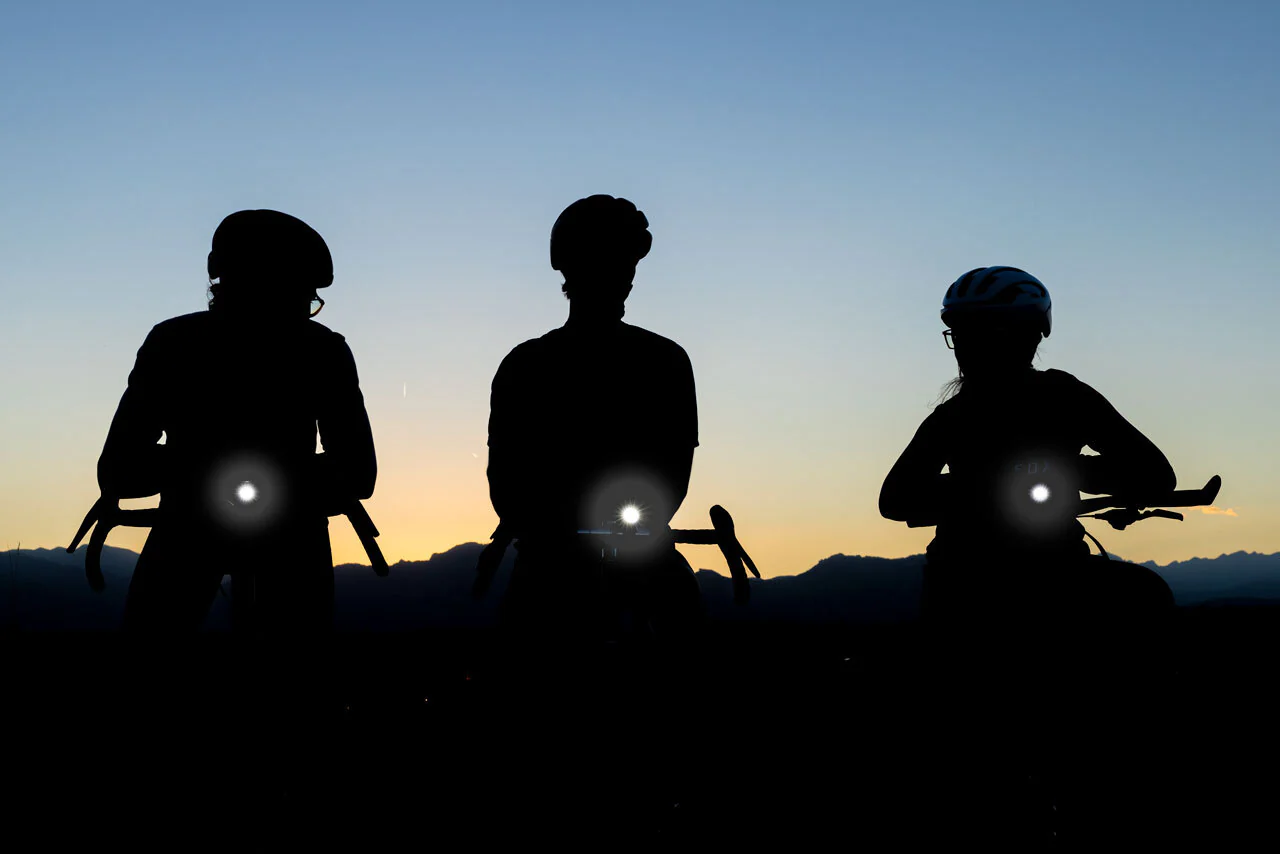Updated: January 26, 2021
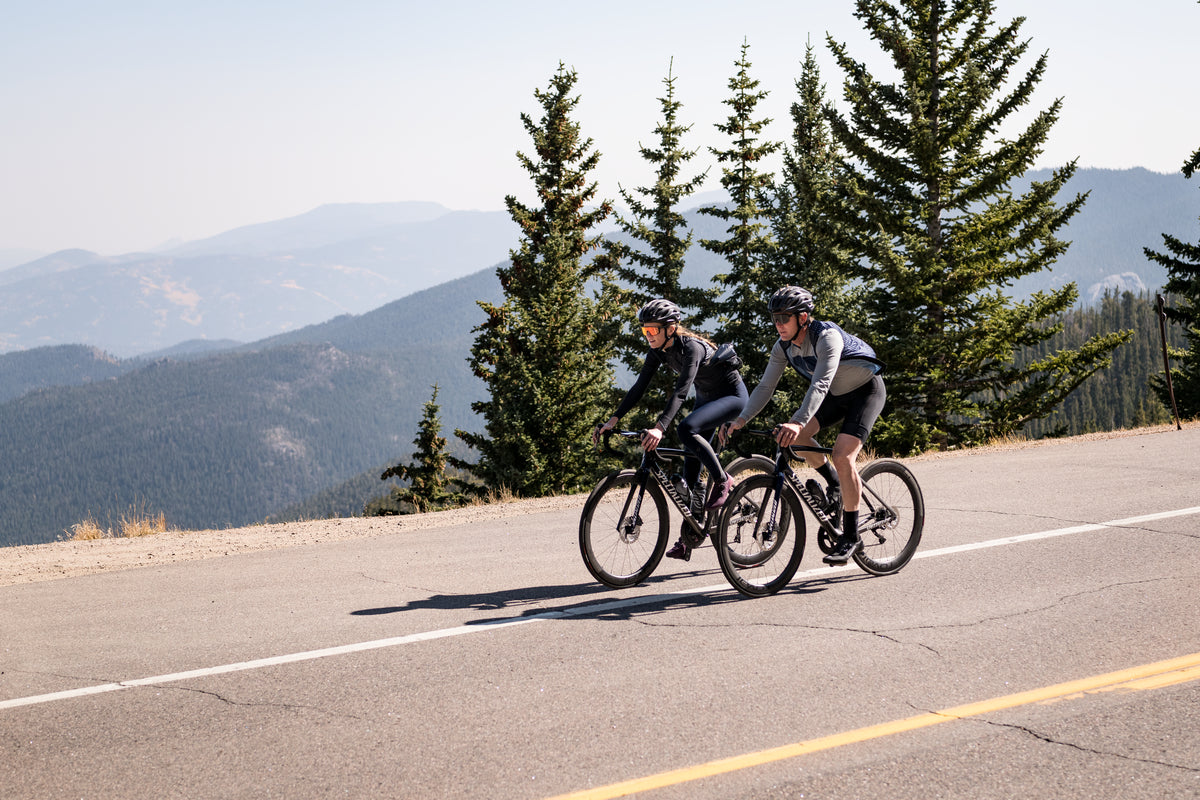 Buying the right road bike — what you need to know
Buying the right road bike — what you need to know
From the glamour of the Tour de France to the quiet meditation of a morning spin, road bikes are vehicles for a range of wonderful experiences — and for good reason. Practically everyone has a road outside their front door. Some of us have never really explored where it goes. What better way to see where it goes than by bicycle?
The trouble is, the world of road bikes can sometimes be confusing, arcane, or, at worst, snobby. So if you’re new to riding, it might be difficult to decide on the right bike.
That’s where we come in. The Pro’s Closet has a huge array of Certified Pre-Owned road bikes for everyone from first-timers to seasoned masters. With our cycling expertise, we can help you find the right bike for everything from mellow rides to centuries, to races, and beyond.
Let’s get you started with these five key questions and considerations.
1. Should I get a road bike?
As we mentioned, practically everyone has a road out their door, beckoning you to ride and explore. By design, road bikes allow cyclists to cover more distance at faster speeds. The tires are narrow and slick, making them more efficient. The overall bike is lightweight for quicker climbing, and most road bikes put cyclists in a body position that improves aerodynamics — again, it comes down to speed. All of these design features are born out of more than a century of evolution and innovation, largely driven by professional racing.
This is good for a lot of riders. Also, bike companies offer variations on the traditional road bike, such as endurance or aero models, to suit different needs (read more on that below). However, if you have lots of dirt roads in your area, you might prefer a gravel bike, which is similar to a road bike but far more capable with wider, knobby tires, more relaxed geometry, and other comfort features. If you aren’t comfortable with drop handlebars or might even dabble with your local trails, a mountain bike could be a better choice.
Read more: Why you should ride an endurance road bike, Do you need an aero road bike?
2. What size road bike do I need?
Most road bikes are sized numerically, based on the length of the seat tube, usually from the center of the bottom bracket to the top of the seat tube clamp. Classic road bike sizing is “square,” meaning the top tube length matches the seat tube length. That’s less common these days, and some manufacturers have even switched to lettered sizing ranges (i.e., S, M, L).
No matter the sizing labels, top tube length is the fundamental measurement to consider when choosing a bike size. This influences how much you have to hinge your torso and extend your arms to reach the handlebars. Experienced riders typically prefer a stretched-out cockpit, while new riders might be more comfortable with a shorter reach to the bars.
If you already have a bike, it helps to reference its size and fit when shopping. You could look for a bike that will match what you are used to, or you could look for something that is a better fit. Remember that stem length is also a factor when considering a bike’s reach. Some riders will dial in their perfect reach by changing the stem length. Ideally, a road bike stem length is not too extreme, between 80mm and 120mm, depending on sizing.
Read more: How bike geometry works.

3. Are disc brakes worth it?
 Spend a little time on an online bike forum and you’re bound to hear some strong opinions about disc brakes on road bikes. Like it or not, the bike industry has committed to disc brakes as the standard for road bikes. That means that, unless you have a strong reason to get rim brakes, it’s best to pony up for the latest technology. It’ll pay off in terms of both performance and resale value.
Spend a little time on an online bike forum and you’re bound to hear some strong opinions about disc brakes on road bikes. Like it or not, the bike industry has committed to disc brakes as the standard for road bikes. That means that, unless you have a strong reason to get rim brakes, it’s best to pony up for the latest technology. It’ll pay off in terms of both performance and resale value.
However, you might consider a rim-brake bike if …
You’re on a tight budget
The riding in your area is mostly flat
You want an affordable way to get a lighter-weight bike
4. Road bike components ranking
Typically, components refers to all of the parts on a bike used to shift gears or brake — cassette, chain, crankset, derailleurs, shifters, and brake calipers. The two most common component manufacturers are Shimano, SRAM, and a detailed comparison can be found in our Shimano vs. SRAM article. You might also encounter a bike with Campagnolo components, which are rarer but have a devoted following among discerning cyclists.
Entry-level drivetrains will generally be cheaper, but less-refined and heavier. As you become more experienced, competitive, or pickier, higher-end components will become more appealing. Our Shimano road component comparison goes over the differences between three of the most popular component groups, 105, Ultegra, and Dura-Ace, and explains what the difference in price gets you. If you have the budget and are looking for the latest and greatest technology, electronic drivetrains like Shimano Di2 and SRAM eTap AXS are worth considering.
Over time, experienced cyclists usually gravitate toward one brand or another based on their personal preferences for ergonomics, shifting technology, and even simply aesthetics.
Basic Component Hierarchy
|
Shimano |
SRAM |
Campagnolo |
|
|
Entry |
Sora/Tiagra |
Apex |
Veloce/Centaur/Potenza |
|
Mid-Level |
105 |
Rival |
Chorus |
|
Mid-Upper |
Ultegra |
Force |
Record |
|
Top |
Dura-Ace |
Red |
Super Record |
Read more: Do you need electronic shifting?
5. Bike frame materials
Unless you’re considering a titanium- or steel-frame bike from a smaller company, chances are most road bikes you find will have either aluminum or carbon-fiber frames. Overall, carbon fiber is the preferred material for high-performance bikes because it allows manufacturers to precisely and strategically place material throughout the frame to make it lightweight and control ride characteristics like stiffness and comfort. It can also be formed into more complex shapes for better aerodynamics. As such, carbon fiber bikes are usually more expensive than aluminum bikes and they are preferred by most racers or competitive cyclists.
Aluminum used to get a bad rap. In the 1990s and early 2000s, the material was often used in budget frames with little consideration given to ride quality. Don’t be fooled. Aluminum frame manufacturing has improved so much that the best modern aluminum bikes can compete with entry-level carbon fiber bikes on weight, stiffness, and ride quality. They might even be less expensive to boot. That’s why alloy bikes have developed something of a cult following.
As a general rule, if performance is a priority and you can afford to spend a little more, a carbon frame is a better option, all things equal. However, riders on a budget would be wise to seriously consider an aluminum-framed road bike to get a quality bike for less.
Read more: Frame materials - Carbon vs. Aluminum, A case for aluminum
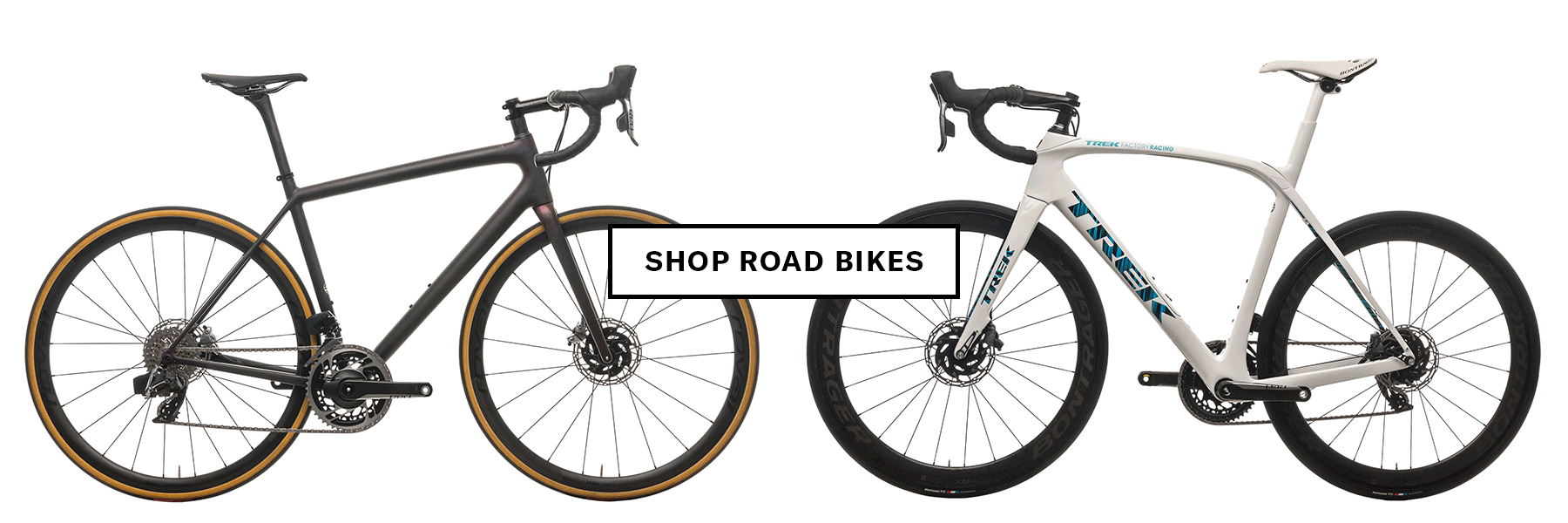
If you need help picking a bike you can always contact our expert Ride Guides for assistance.
To learn more about road bikes and other considerations when buying a bike, read on.
Other considerations:
- What type of rider are you?
- How will you use your bike?
Here’s a handy exercise that helps define your riding style and narrow down your bike choices — imagine your dream riding scenario. This level of fantasy exists in some form within all of us, even if you've never ridden a bike before.
Do you see yourself hanging on to fast pacelines and sprinting up hills? Are you trying to set new personal records for speed and distance and on climbs? Or do you imagine pedaling long distances and exploring new, rarely traveled roads? Are you a racer? A fitness nut? A weekday commuter? A weekend cruiser looking to relax?
The answers to these questions can help you understand what equipment you need. Things like bike type, frame material, drivetrain, wheels and tires, and geometry affect how a bike will ride and what type of riding it caters to.
If you want to maximize speed and efficiency then you'll be best served by a more aggressive road racing bike. It will be stiffer and lighter, the handling will feel quicker, and the lower position will help you attack if you're trying to set new personal records, ride with fast groups, or race.
If you're more concerned with comfort, then maybe a more upright endurance bike is better. It will be designed to have more compliance in the frame and fit larger tires. This will improve comfort and also allow you to explore more roads with rough surfaces, dirt, or gravel as well. Despite being more relaxed than a road racing bike, it will still be able to go fast when you need it.
If you're interested in carrying extra bags on the bike for ultra long-distance riding or regular commuting, then a touring bike might be up your alley. You can tour and commute on any bike, but a touring style bike is designed to be as relaxed as possible and provide more options for attaching racks, fenders, and other accessories.
Your dream riding scenario is something that might change or evolve over time. Saving money and buying Pre-Owned and Certified Pre-Owned bikes lets you continue to explore, experiment, and develop yourself as a rider. With helpful options like Guaranteed Buyback, it's easy to change course and try something new.
Bike type
 Road bikes are easily identified by some shared characteristics: drop (curved) handlebars, narrower tires with smooth, slick, or minimal tread, and no large mountain bike-style suspension components like forks or rear linkages. This allows road bikes to ride efficiently on paved road surfaces and go farther and faster than other types of bikes.
Road bikes are easily identified by some shared characteristics: drop (curved) handlebars, narrower tires with smooth, slick, or minimal tread, and no large mountain bike-style suspension components like forks or rear linkages. This allows road bikes to ride efficiently on paved road surfaces and go farther and faster than other types of bikes.
Road bikes can be split into a few basic categories: road racing, endurance, and touring.
If you need help discerning a bike's intended purpose or finding a bike that is right for you, you can always contact our expert Ride Guides for assistance.
Road racing
The vast majority of road bikes you will encounter in the used marketplace will be standard road racing bikes. This type of bike is designed to be lighter, often more aerodynamic, and to maximize converting a rider’s pedaling effort into speed. These are the types of bikes you will see being ridden by professional road racers.
But you don’t have to be interested in racing to enjoy one. Road racing bikes are perfect for anyone from casual riders looking to improve their fitness to more performance-oriented riders looking to ride regularly, accumulate mileage, participate in group rides, or beat their own personal bests on Strava.
Road racing bikes will usually have stiffer frames to improve power transfer. To minimize weight and aid in acceleration road racing bikes will often fit between 23-28mm tires, with some newer designs having additional clearance for larger 28-32mm tires.
The riding position will generally be lower, more aggressive, and performance-focused, though this can be adjusted to your liking with cockpit components. The frame geometry will generally be geared toward more responsive handling to help riders change direction easily and attack climbs, descents, and corners.
Aero road bikes are also a very popular option. Aero road bikes feature more frame shaping designed to improve the bike aerodynamics. The greatest force riders have to fight against is wind resistance and aero bikes can make riders faster by reducing the energy needed to maintain speed. You can read more about the advantages of aero bikes in our "Do you need an aero road bike?" article.
Endurance
As riders have branched out beyond riding perfectly smooth, paved roads, endurance bikes have emerged to help take the edge off. Endurance road bikes are actually quite similar to their road racing counterparts, and many riders will use endurance bikes for road races when course conditions require it or if they just prefer the extra comfort.
The riding position is generally more upright and the frame geometry will be slightly longer and more relaxed to provide a more comfortable and stable ride. Endurance bikes often feel less "twitchy" than more high-strung road racing bikes.
If you regularly ride rough, bumpy, unmaintained, or sometimes unpaved roads, then endurance bikes will make it easier. If your goal is to spend a lot of time in the saddle and cover lots of miles, an endurance bike will provide more comfort for epic long distance, long duration rides. They are also great for those simply seeking a fast bike that is more upright, stable, and comfortable than a more aggressive traditional road racing bike.
Endurance road bikes often have additional compliance designed into the frame to provide more comfort and control on rough road surfaces. This can come in the form of different construction, special carbon layups, vibration-damping inserts, and small suspension components that affect touch points like the bars and saddle. The Specialized Roubaix and Trek Domane are two very popular examples of endurance bike designs that use unique frame designs and components that provide a bit of suspension to increase rider comfort.
The biggest differentiator for endurance bikes is the ability to fit larger tires in the 28-32mm range. Some newer models, like the latest Trek Domane, are even able to fit extra-wide 38mm tires. Larger tire volume increases comfort and traction on rough roads.
You can read more about the advantages of endurance bikes in our "Why you should ride an endurance road bike" article. It has a handy list of some of the most popular endurance road bike models that can help you narrow down your search.
Touring
Touring road bikes go a step beyond endurance road bikes and have features that allow them to carry additional gear for extra-long rides or multiday adventures. Their biggest goal is to maximize comfort, accessories, and reliability. Weight and aerodynamics are not usually a big concern for touring style bikes.
Both road racing bikes and endurance bikes can be used as tourers with the addition of strap on bags, but touring bikes are a more specialized tool. Touring bikes are ideal for riders who want to undertake epic multiday rides over a wide variety of roads and surfaces and self-sufficient adventurers looking to ride where few riders go.
They're also great for commuters who want to carry extra clothes or work equipment on their bike rather than in a backpack. The increased comfort and carrying capacity can also be desirable to recreational riders who need a more utilitarian bike for things like groceries. These bikes aren't racers, and riders more interested in the performance side of the sport will be better served by lighter and more efficient road racing or endurance bikes. Still, anyone can get fit riding recreationally on a tourer.
Touring bikes often have the greatest amount of tire clearance, able to run tires above 30mm wide, in some cases over 40mm, and some even accept mountain bike tires. Larger volume tires are key to rider comfort and the ability to load the bike up with additional gear and can help tourers tackle bad and unpaved roads when they encounter them. The frames will be built with plenty of mounts for additional bottles, luggage, and fenders.
More durable and compliant frame materials like steel are generally preferred. Touring bikes are generally much heavier but much more durable and robust than racing or endurance road bikes. The riding position and geometry will be the most upright and relaxed of the bike types.
Gearing
 When looking at a bike on The Pro’s Closet, the size, or tooth count, for the chainrings and cassette will be listed in the specifications. Chainring size will be listed under “crankset.”
When looking at a bike on The Pro’s Closet, the size, or tooth count, for the chainrings and cassette will be listed in the specifications. Chainring size will be listed under “crankset.”
Chainrings
For chainrings, the more teeth a chainring has, the "harder" or "taller" the gearing is. Harder gearing allows you to achieve higher top speeds, while “easier” or “lower” gearing provides easier gears for climbing.
The cranksets of most road bikes will have either two or three chainrings. These are referred to as double and triple cranksets. The double is the most common option. It’s easier to shift between two chainrings than it is to shift between three, and the chainring combinations double cranksets use will cover the gear range needed by the majority of riders.
Triple cranksets are more common on entry-level bikes and touring bikes. Triples have a third extra small chainring that provides additional “granny gears”. They are good for more novice riders that need easier gearing to make it up difficult or steep climbs or touring bike riders that need to ride long distances while weighed down with luggage.
As mountain bike technology has trickled into the road bike world, some bikes have appeared with 1x (One-by) drivetrains that use a single chainring. Many bikes using this setup are more specialized and better for riding gravel and dirt roads.
Standard vs. mid-compact vs. compact
Double cranks generally come in one of three standard chainring combinations. For example, a "standard" crank has a "53/39t" chainring combo, with a 53 tooth large ring and a 39 tooth small ring. The more teeth a chainring has, the "harder" or "taller" the gearing is. Taller gearing allows you to achieve higher top speeds, while lower gearing provides easier climbing gears.

Standard (53/39t) cranks suit riders who live in areas with latter terrain or fitter advanced riders who can push harder gears and achieve higher speeds. Many competitive racers prefer standard cranks for maintaining pace in groups at high speed.
Mid-compact (52/36t) cranks work as an in-between option for riders who split their time between high-speed riding and racing and extended climbing. Mid-compact cranks are a good compromise for most riders and terrain.
Compact (50/34t) cranks suit riders who ride more hilly or mountainous terrain and are more focused on climbing than riding on flats. They also benefit riders who need to spin more due to joint issues, or more novice riders who need easier gearing.
Cassettes
The tooth count for cassettes will be listed as a range (e.g., 11-28t). The small number is the size of the smallest cog on the cassette and the large number is the size of the largest cog. The more teeth on the large cog, the “lower” or “easier” the lowest gear will be.
Riders who need the easiest gear possible for hills and climbs should look for a cassette with a big range and the largest cog available. The downside of increasing the range of a cassette is bigger “steps” between gears. Racers often want smaller steps between gears to keep their cadence more consistent while they shift.
How many “speeds” a road bike has is equal to how many cogs are on the rear cassette. An “11-speed” drivetrain has a cassette on the rear wheel with 11 cogs on it. With newer generations of drivetrains, manufacturers have been able to add cogs on the cassette to increase drivetrain speeds.
The newest drivetrains will have 11 to 12 speeds. The advantage of more speeds is that they allow for a wider gear range with smaller “steps” or gaps between gears.
Entry-level drivetrains generally have fewer speeds than high-end drivetrains. Older or more entry-level 9- and 10-speed drivetrains will still work great and will cost less, at the expense of refinement, potential compatibility with new components, and resale value.
Wheels
Other than the frame, wheels will have the greatest effect on how your bike rides. This is because wheels and tires are rotating weight, so they have a large effect on how easily and quickly you’re able to accelerate. Wheels and tires are also the first points of contact with the wind and the road surface. This means they have a large effect on the aerodynamics of your bike and its rolling resistance. Lighter and more aerodynamic wheels are the best way to improve a road bike’s performance.
Carbon wheels are one of the most popular aftermarket upgrade options for road bikes. Carbon fiber is exceptionally light, stiff, and strong. Because of carbon’s strength to weight advantage, rims can be made deeper, wider, and more aerodynamic, without a massive weight penalty. The stiff feel of carbon rims can also sometimes improve the cornering and acceleration of your bike.
Because of these benefits, racers and competitive riders often prefer to use carbon wheels. The addition of a quality set of carbon wheels can often significantly increase the value of a used road bike. Despite carbon’s advantages, some more recreational or utilitarian riders may still prefer traditional aluminum wheels. Aluminum is less expensive and in some cases more robust and resistant to damage.
When buying a used bike, it’s always important to inspect both carbon and aluminum wheels carefully to ensure they are free of cracks or structural damage. The Pro’s Closet’s mechanics inspect and service all wheels on our Pre-Owned road bikes to ensure they run true and straight and are structurally sound.
Wheels are often the first upgrade many riders make to their bikes. To learn more check out our article on How to upgrade your wheels.
 Hopefully, this guide has helped you learn a thing or two about road bikes and have a good idea of how to find the bike you want for your riding. Remember, if you ever need help, you can always contact our expert Ride Guides for assistance!
Hopefully, this guide has helped you learn a thing or two about road bikes and have a good idea of how to find the bike you want for your riding. Remember, if you ever need help, you can always contact our expert Ride Guides for assistance!
